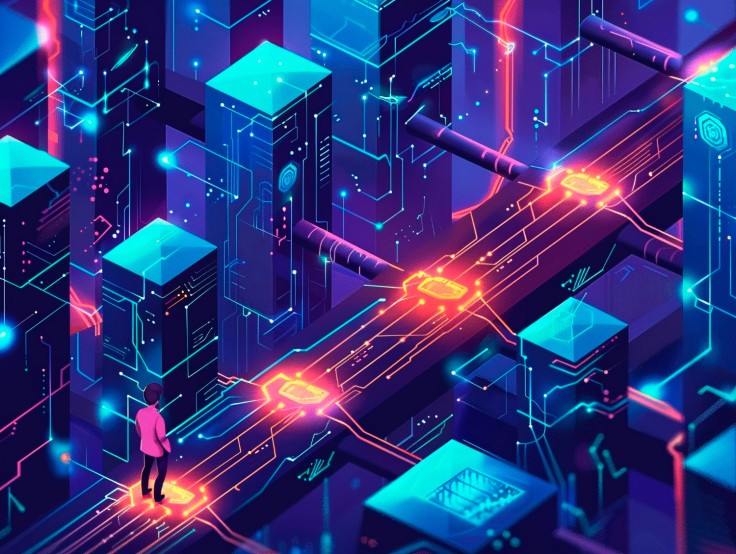
Web 3.0 is often referred to as the decentralized web. It is a secure, anonymous way to access different information and sites on the internet. Aside from the personal privacy elements, one of the key elements of Web 3.0 is that information and websites are not accessed through corporate-run web services. Whereas the regular web is often accessed through AWS or Google, with a decentralized web, an individual owns different parts of the internet, which one will then use to access the information they seek.
There are a lot of advantages to Web 3.0, so it isn't surprising that it is growing in popularity. 2024 is seeing the rise of a few new trends in the world of the decentralized web, so let's take a look at a few of them in turn.
Decentralized Identity Solutions (DID)
How often do we turn on the news or look online to see that some major corporation has suffered a major data breach? This puts the personal information (often financial) of tens of thousands, or even millions, of people at risk of having their private information stolen. This is not only bad for the consumer, but it is bad for the corporations that suffer the breach.
As personal security and privacy are so important to a decentralized web, decentralized identity solutions are also going to be really important. These are meant to keep users' information safe by reducing the risk of data breaches. Unauthorized access to a network is one of the most common ways that someone will get into a computer system to steal data.Keeping a user's personal information and privacy secure is one of the main points of Web 3.0 to begin with. So far, the ways this is being handled is through greater personal control over one's private information, reduced dependence on third-party networks or software solutions, and universal login credentials.
Interoperability
One of the things the regular web does great is provide stable communication between different networks and applications. This is something called interoperability. It refers to how well technologies can communicate and function together in as seamless a way as possible. For someone using Web 3.0, there still needs to be a way to move between different applications and services in a streamlined and, of course, secure manner.
Web 3.0 relies heavily on elements like blockchain, which provides a means of peer-to-peer connection. As more and more decentralized systems, applications, and networks come online, their ability to communicate with the systems that are already out there is of paramount importance. This is where a lot of the brainpower in this field is currently going.
Currently, the ability to create cross-chain transactions is a key focus. This will allow users to pay or receive crypto without the need for some sort of corporate mediator.
Tokenization
In essence, tokenization refers to the ability to split an asset into smaller parts, called tokens, that can be bought, sold, or traded. Most commonly, this is done using the blockchain. However, this is not the only way that information can be tokenized. Sensitive information such as a credit card number can be turned into a token, which is an unrelated number of values that has no direct relation to the personal information.
Not only is it a way to send and receive cryptocurrencies without the need for an intermediary, but it also acts to keep data and personal information more secure as well.
In 2024, efforts to tokenize real-world assets are underway. This can include things like art, real estate, or even commodities. It is a way that would allow a truly decentralized means to buy and sell a whole host of different tangible items.
Security and Privacy in Web 3.0
In the pursuit of a safer and more private Web 3.0, several innovative solutions are gaining attention. Decentralized virtual private networks (dVPNs) are one such solution, providing privacy through a network of private computers that encrypt and distribute data without relying on a central authority.
Equally important are Zero-Knowledge Proofs (ZKPs), a cryptographic method that verifies the truth of a statement without sharing the data underlying that statement. This technology is crucial for maintaining privacy in online transactions.
Secure Multi-Party Computation (SMPC) also plays a vital role by enabling parties to jointly compute a function while keeping each party's inputs confidential. This method is essential for scenarios requiring collaborative computation without compromising privacy.
Finally, Self-Sovereign Identity (SSI) systems allow individuals to manage their own identities without depending on central authorities, significantly reducing the risk of identity theft and enhancing user control over personal data.
Together, these technologies are crucial for advancing security and privacy in Web 3.0, each contributing uniquely to a safer decentralized web environment.
In Closing
These are just a few of the trends we've seen unfolding in 2024. The future of the decentralized web is bright. Web 3.0 is a safe and secure way to access information and even trade assets. As the technology continues to improve, users will have an even more powerful tool that allows them to take their data security and personal privacy to a whole new level.









